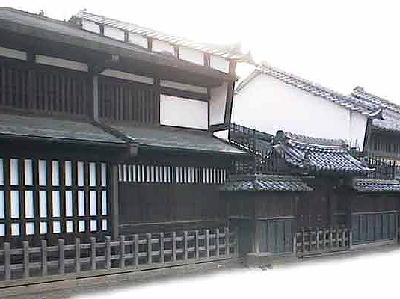|
Of the 69 stops along the old Nakasendo highway, Otajuku is the 51st post town, counting from the Itabashi end. Otajuku prospered because of its strategic location right before the Otanowatashi, one of the three most gruelling sections of the highway. It was also sited before the highway forked into the Hida and Gujo highways.
Otajuku spreads 680m east to west along the highway, and preserves much of its historic architecture and scenery, allowing visitors to enjoy the old atmosphere while strolling the streets. After walking past the Matsugata and entering the Former Nakasendo Highway village, the remains of the Honjin Gate are to the left, while on the right is a side building open to the public.
In the vicinity is Yusen-ji Temple, famous for its Waterfall Kannon legend, the grave of Banryu-Shonin, and monuments commemorating the poems of Shoyo Tsubochi, Hakushu Kitahara and Matsuo Basho. In the old days, travellers leaving Otajuku would cross the Kiso River at Otanowatashi, and head for Fushimi and Mitake.
Otajuku spreads 680m east to west along the highway, and preserves much of its historic architecture and scenery, allowing visitors to enjoy the old atmosphere while strolling the streets. After walking past the Matsugata and entering the Former Nakasendo Highway village, the remains of the Honjin Gate are to the left, while on the right is a side building open to the public.
In the vicinity is Yusen-ji Temple, famous for its Waterfall Kannon legend, the grave of Banryu-Shonin, and monuments commemorating the poems of Shoyo Tsubochi, Hakushu Kitahara and Matsuo Basho. In the old days, travellers leaving Otajuku would cross the Kiso River at Otanowatashi, and head for Fushimi and Mitake.
| [+ADDRESS] | 
|













